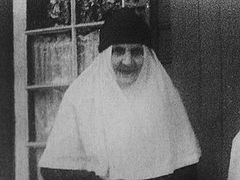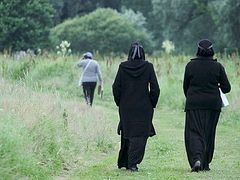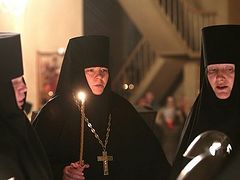Pukhtitsa Monastery in Estonia is a special place of pilgrimage not only for Orthodox Christians from Russia and the Baltic States, but from many other countries as well. People come here from every corner of the earth, regardless of the visa regime and border formalities. They come alone and in groups, for long stays and for a day or two. Some come on a tour to learn about the life of the monastery, some come for work and prayer, and others direct their steps to this region to bear the difficult but blessed monastic podvig.
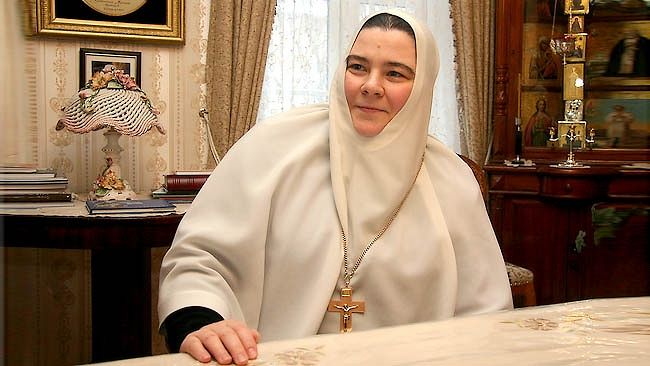 Abbess Philareta (Kalacheva) of Pukhtitsa Monastery. Photo: Lester Lillevyali / sp.pohjarannik.ee
Abbess Philareta (Kalacheva) of Pukhtitsa Monastery. Photo: Lester Lillevyali / sp.pohjarannik.ee
The monastery is located in the small village of Kuremäe, which means, “Crane Mountain,” in northeastern Estonia, about eighteen miles from the border with Russia. Twice a week (on Mondays and Fridays), a bus goes straight from Tallinn to Kuremäe (it usually takes about three hours). It’s not hard to get there other days either: You can take a bus to Jõhvi, and from Jõhvi to Kuremäe (there are about seven or eight buses a day during the week; they run less often on the weekends).
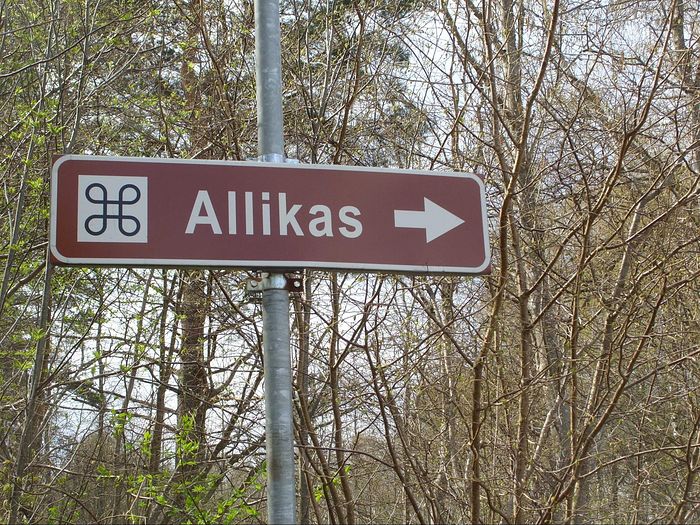 Sign pointing to the holy spring. Photo: S. Mudrov / Pravoslavie.ru
Sign pointing to the holy spring. Photo: S. Mudrov / Pravoslavie.ru
The trip from Jõhvi to Kuremäe took me about an hour. I got out at the last stop, near the grocery store. A wide road leads up to the monastery gates, with pretty birch trees lining it on both sides. Reaching the gate, I crossed myself and entered reverently. “What a joy that I finally made it to Pukhtitsa,” I thought, rejoicing as I set foot on the territory of the monastery.
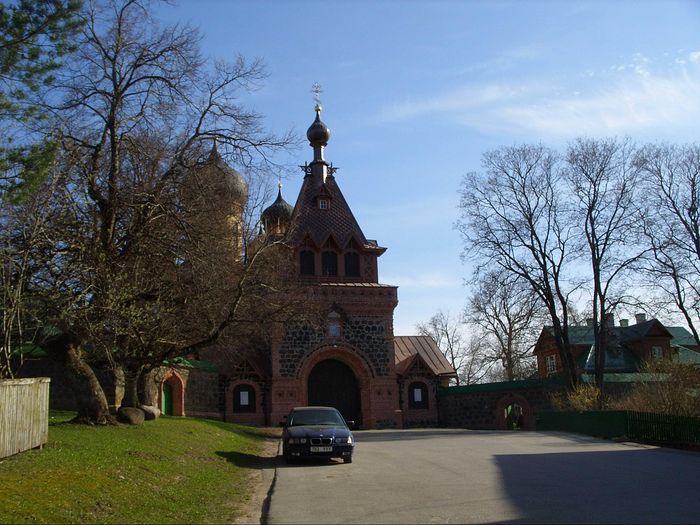 The central entrance to the monastery. Photo: S. Mudrov / Pravoslavie.ru
The central entrance to the monastery. Photo: S. Mudrov / Pravoslavie.ru
I didn’t know the way to the abbess’ house; there were no signs at the entrance and I couldn’t find anyone on duty either. Following the directions of a nun I met, I went to three identical houses opposite the entrance to the largest church—the Dormition Cathedral. After further inquiries, I managed to figure out that the abbess’ house was the one in the middle.
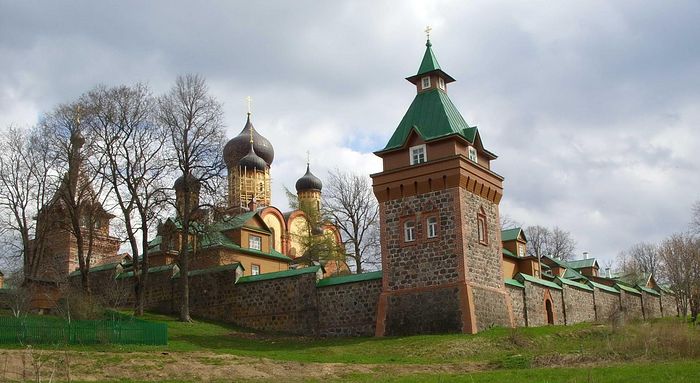 Pukhtitsa Monastery. Photo: S. Mudrov / Pravoslavie.ru
Pukhtitsa Monastery. Photo: S. Mudrov / Pravoslavie.ru
It turns out I entered the monastery through the back gate. The holy gates are located near the Dormition Cathedral, and of course there is someone on duty there, ready to help arriving pilgrims.
The monastery pleasantly surprised me with its neatness and cleanliness. It was also neat and clean in the pilgrim’s guest house, where they put me for two days. The pilgrims’ trapeza was uncommonly tasty and nutritious; I especially liked the apple confit and the monastery’s cottage cheese and sour cream. Of course, behind all this beauty, splendor, and neatness lies the painstaking daily work of the sisters and those pilgrims who come to the monastery to share some of their concerns with the nuns.
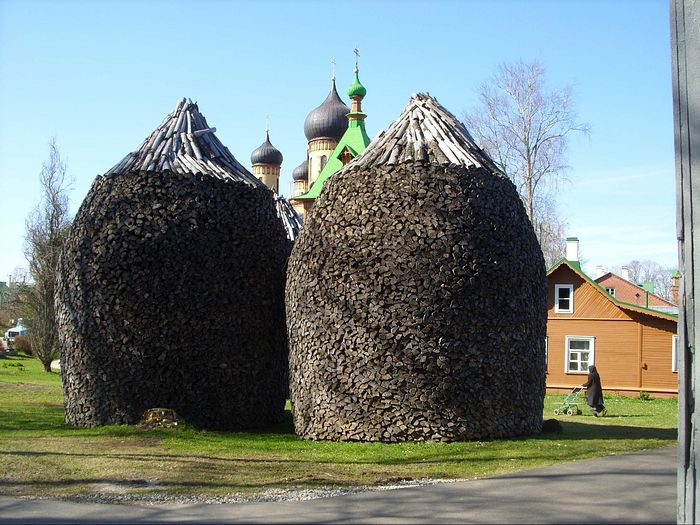 Pukhtitsa woodpile. Photo: S. Mudrov / Pravoslavie.ru
Pukhtitsa woodpile. Photo: S. Mudrov / Pravoslavie.ru
Pukhtitsa-Dormition Monastery was founded in 1891. According to tradition, the Mother of God appeared at the mountain in the village of Kuremäe in the sixteenth century. Near the spot where the Mother of God appeared, an icon of the Dormition of the Most Holy Theotokos was found in the branches of an oak tree. From that time, the locals began to call the mountain “Pukhtitska,” meaning “holy” in Estonian. St. John of Kronstadt, the patron and spiritual mentor of the first sisters, played a major role in the establishment of the monastery. Since 1891, Pukhtitsa Monastery hasn’t closed even for a day: Patriarch Alexei II took considerable care of it from the time of his governing the Tallinn Diocese. Since 1990, the monastery has been stavropegial, that is, it is directly subordinate to His Holiness the Patriarch.
Mother Philaret tells about herself and the monastic life
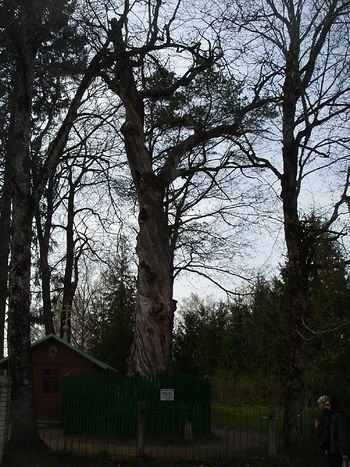 The oak in the hollow of which the icon of the Dormition was found Since the foundation of the monastery, there have been seven abbatial changes. From 1968 to 2011, the monastery was governed by Abbess Barbara (Trofimova). In November 2011, Mother Philareta (in the world Ksenia Viktorovna Kalacheva) became the eighth abbess. Originally from Samara, she entered the monastery in 1992.
The oak in the hollow of which the icon of the Dormition was found Since the foundation of the monastery, there have been seven abbatial changes. From 1968 to 2011, the monastery was governed by Abbess Barbara (Trofimova). In November 2011, Mother Philareta (in the world Ksenia Viktorovna Kalacheva) became the eighth abbess. Originally from Samara, she entered the monastery in 1992.
Mother Philareta recounts:
—I was born in an Orthodox family. My biography is quite ordinary: school, then biology at Kuibyshev State University. I really love the city where I was born—Volga, in the middle band of Russia. It’s my homeland, and you always treat your homeland with reverence—you can’t forget the place where you spent your childhood, the people with whom you grew up. My parents tried to take us children to the Black Sea every summer. I was very serious about swimming, and these trips to the sea not only brought me joy, but also had a positive effect on my health. One day I returned from one of these trips with a full suntan. I was either in my third or fourth year then, I don’t remember exactly. After the Sunday Liturgy I decided to go up quickly to venerate the cross and then run off to be about my business. Our Vladyjka John (Snychev) of Samara was preaching just then.
—The future Metropolitan of St. Petersburg and Ladoga?
—Yes, he headed the Kuibyshev Diocese from 1969 to July 1990. My mother was his spiritual daughter; she really loved him and would turn to him for advice. So, on this Sunday, Vladyka was talking about how people spend their days meaninglessly, carelessly wasting their time. He was saying they lay on the beach, like pigs, burning in the sun. I felt like it was said for me. I decided not to approach the cross, but quietly walked away and then left the church in shame. I talked about it at home with my mother: Maybe we should go to a monastery to work and pray? We could help the monastery and it would be good for our souls. My mother said: “Let’s ask Vladyka where he suggests we go, and that’s where we’ll go.” Vladyka had just been transferred to St. Petersburg, and he blessed us to go to Pukhtitsa. That’s how I got acquainted with Pukhtitsa Monastery.
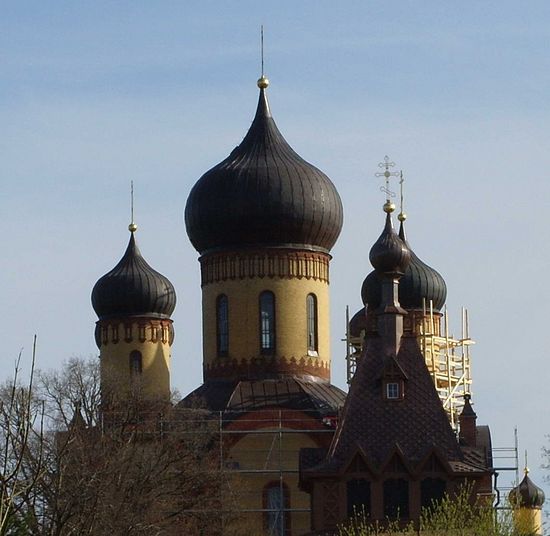 The Domes of the monastery’s Dormition Cathedral
The Domes of the monastery’s Dormition Cathedral
In the summer of 1991, after passing my exams, I went to Estonia with my mother. Then my mother returned to Samara to work and I stayed in Estonia all summer. I didn’t want to leave. I started asking about staying in the monastery. Of course, my mother understood everything but asked that I graduate from college first. I was of a different mind: Who would need my profession in the monastery —embryologist and geneticist? What am I going to do with these degrees? However, Vladyka John also said that I had to finish my studies. I asked Mother Barbara, but she said the same thing: “Finish your studies!” It felt like the doors to the monastery were closed to me then.
—It must have been a great sorrow for you.
—Yes, it was a year of bitter waiting and trial for me. I really liked it in the monastery, although I immediately noticed what colossal work the sisters undertook. Everyone worked. I helped out in the guest house from morning to night and night to morning. There was absolutely no free time. Sometimes I didn’t even make it to the services: I had to pick up after guests, washing and dusting… Some say it’s all too much fuss. Of course, in all human affairs, there’s no escaping the fuss, but despite the constant work, the sisters never forget about prayer. And the work was edifying, to the glory of God and for the good of the holy monastery. As Mother Barbara would say, labor can be equated with prayer if it is done with a feeling of gratitude to God and is perceived as service to the Lord.
—Which is probably not easy, especially when the workload is heavy and grueling…
—I remember how we would go out to the hayfields. The older sisters would go out to cut the grass in the fields and we would go out later to dry the hay. You start to rake the hay (the place is damp, the heat is hard to bear), with unaccustomed fatigue not so much from the work as from the heat. Additionally, huge gadflies would fly into the field, causing a real terror. And then in the midst of this heat and the frightening insects, a voice is heard: “Sisters, come drink tea!” A sister had lit the samovar and was calling us. We’d all go sit and drink tea, exhausted, joking about one another, but good-naturedly, without any malice or sarcasm. Everything would become light and easy then, and the fatigue would even pass. It conquered me, and I wanted to work with them, to stay with them forever. I was conquered by this sisterly love, although, of course, they could squabble for a short time—they’re still people. But it was so different from what happens in the world; everything was different, with a different relationship to one another. I’d never seen such a life before. But alas, the time came for me to return to Samara, to school. After Pukhtitsa, everything at home suddenly felt foreign to me, even my own room. My mother was upset, of course, realizing that I was going to leave.
It's hardest for all for mothers. They are the first to lay this cross upon themselves: It’s not easy to bless your child for the monastic path, to give them to the Lord and not regret it. Although, I think a mother’s heart will always grieve. All parents want their children to be with them, to support them in their old age, to comfort them, to strengthen them. It’s a podvig for parents, letting their child go to a monastery, depriving themselves of comfort; but the Lord will reward them a hundredfold.
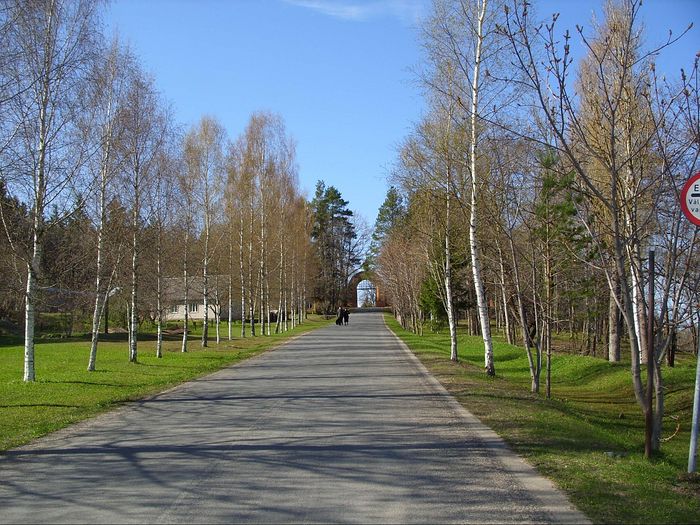 The road to the back gate of the monastery. Photo: S. Mudrov / Pravoslavie.ru
The road to the back gate of the monastery. Photo: S. Mudrov / Pravoslavie.ru
In Samara, Ksenia Kalacheva finished her last year of school and received her degree, as Vladyka John and Abbess Barbara told her to. Having said goodbye to her native land, she bought a train ticket and left for Estonia, to her much-loved Pukhtitsa, which she had been dreaming about the whole past year. Ksenia again plunged into monastery life, though no longer as a pilgrim, but as a full-fledged inhabitant of the monastery, bearing together with all the sisters the podvig of labor and prayer that she had chosen for the rest of her life. At first she helped in the monastery guesthouse, she worked in the barnyard, then again in the guest house, and finally—the abbatial obedience. Ksenia was tonsured as a riassophore nun in November 1993 and to the mantia in March 2002. In November 2011, Mother Philareta became the abbess of Pukhtitsa Monastery.
Who enters the monastery
Mother Philareta now bears the difficult labor of managing the monastery, which has about 120 sisters (about ninety of them stavrophore and riassophore nuns, and the rest novices). Before the collapse of the USSR, the monastery was mainly replenished by sisters from Russia. But in our days, with the closed eastern border and the visa regime with the CIS countries, this has probably become difficult. I asked Mother Philareta about it.
—Of course, it became more difficult with the closing of the border. People have to have an international passport and get a visa. But as before, those who want it have the opportunity to come to the monastery and enter the monastery. Those who are accepted as sisters eventually receive residency permits in Estonia. So even today the monastery is replenished mainly by sisters from Russia and the CIS countries.
In Russia itself, many monasteries have opened in recent years, so there is great competition [Mother Philareta notes with a smile]. Our Pukhtitsa Monastery used to be the only convent a young girl could enter on the territory of the USSR, except for a few small monasteries that were preserved on the territory of Ukraine, Latvia, Lithuania, and Moldova.
But there are other problems in our times. Unfortunately, very few people come to the monastery now. It’s the same in Russia and in other places. I don’t even know what it’s specifically related to, but I suppose there are many reasons. Our times are quite difficult. The collapse of a huge country, the overthrow of the familiar ideals—all of this obviously affected the new generation. I can’t imagine what we’d be like had we grown up in the same conditions. And how much falsehood and cynicism hits young people through the mass media! They’re erasing concepts like loyalty, constancy, devotion. People are becoming more and more fickle. If such people come to the monastery, they don’t stay, but end up going from one place to another. This is also a problem. However, we have less turnover now because of the visa regime. Another reason why few people come to the monastery today is that today there are few young people living in rural areas, and many of them try to relocate to a city after finishing school. But monasteries always had more people precisely from the peasant class who knew how to work on the land and loved it.
Listening to Mother Philareta and largely sharing her view, I still talk about the positive aspects of the fall of the communist regime. After all, it was thanks to the collapse of the totalitarian soviet system that the Church finally found its freedom. There are no obstacles to opening new parishes, celebrating the Divine services in prisons and hospitals, missionary activity, and Church preaching.
—Yes, the freedom of the Church exists, but look at how many sects have popped up, how many people in general have gone off the path. I don’t know how to explain it, but despite the period of Church revival, not that many young people started going to church, and a small portion of them choose the monastic life.
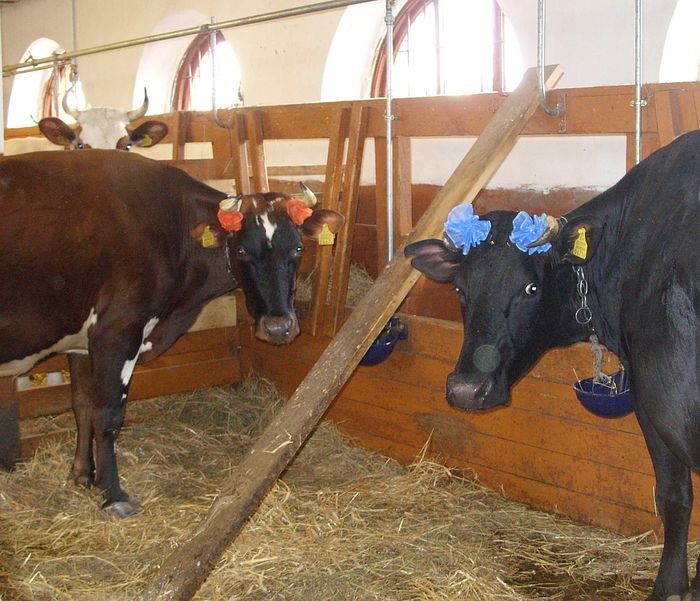 Monastery cows. Photo: S. Mudrov / Pravoslavie.ru
Monastery cows. Photo: S. Mudrov / Pravoslavie.ru
I remember how Mother Barbara used to choose candidates to stay in the convent. There would be thirty young girls standing before her and she would say, “No, young lady, the monastic life is not for you, no you can’t join the monastery…” As a result, out of thirty, she would choose three or four. There were many who wanted to live in the monastery then. And what about now? For example, in 2011 only four girls came to us—three from Russia and one from the Baltics. Two had to be turned away—one was very sick, unable to bear the monastic obediences, and the second had young children (she was divorced). I explained to her that she first had to raise her children and get them on their feet, and that you don’t hide from your responsibilities and woes in a monastery. Of course, many who come to the monastery see the external splendor, they plunge into the grace, but sometimes they don’t understand what titanic labor stands behind it.
“It really is a lot of work,” I thought. “After all, it’s not just the daily services, cleaning, cooking, and taking care of pilgrims.” The monastery has a large subsidiary farm, with 185 acres of land on which they grow grains and various fruits and vegetables (including apples, which are used to make the confit that I really liked). There’s a barnyard with cows, goats, and chickens. In May, on the feast of St. George the Victorious, before releasing the cattle to pasture, they serve a moleben of the blessing of the waters in the barnyard (according to monastery tradition, colored bows are tied to the cows’ horns this day). The monastery also has sewing, art, and bookbinding workshops. In short, everything in the monastery is aimed at living by the labor of their own hands, without unnecessary help from outside.
—Thank God, everything in the monastery is running smoothly. Although I won’t hide that we still need an influx of new residents; we need young strength. Moreover, we’re the only stavropegial monastery of the Moscow Patriarchate in the European Union.
There’re almost always many pilgrims and tourists in Pukhtitsa. Even Estonians who have no connection to Orthodoxy come here. I wonder what motivates those native Estonians who come to the walls of our monastery: Is it a purely cultural interest, a desire to learn about one of the attractions of their country, or is it a desire to learn about the faith that inhabitants of the monastery profess?
I think Estonians love the monastery as an architectural monument, as one of the most beautiful places in their country. They’re proud of it and they love to come here and bring guests. They love the monastery. They respect the way of life that we espouse. They often tell me that it’s all very high and beautiful and one can enjoy all of it. And they say it very sincerely.
Monastery services
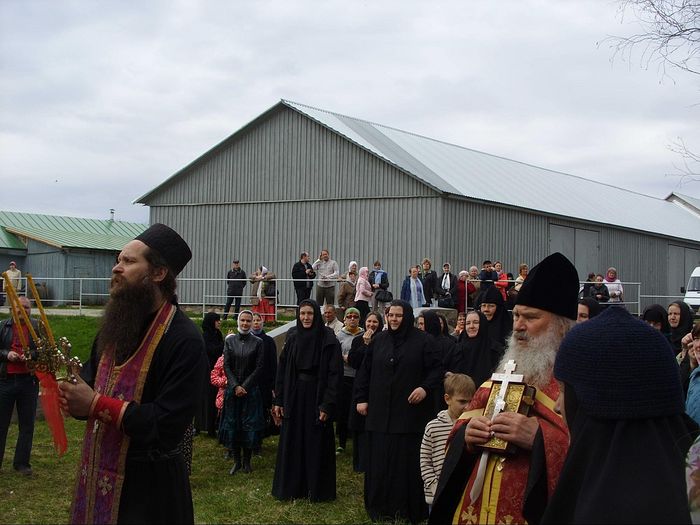 Moleben for the blessing of the waters at the barnyard. Photo: S. Mudrov / Pravoslavie.ru
Moleben for the blessing of the waters at the barnyard. Photo: S. Mudrov / Pravoslavie.ru
Life at Pukhtitsa, as at any other monastery, is unimaginable without the daily services. The main church where services are celebrated is the Dormition Cathedral. This is where the icon of the Dormition of the Most Holy Theotokos, miraculously discovered more than 400 years ago, is located, and also the wonderworking icon of St. Nicholas, the Pukhtitsa Icon of the Mother of God, and other of the monastery’s sacred treasures.
The services are sometimes held in other churches too—in the Church of St. Sergius of Radonezh at the top of Pukhtitsa Hill, the trapeza church of St. Simeon the God-Receiver and Anna the Prophetess, in the house church of the Holy Hierarch Alexei and the Great Martyr Barbara, and also in the cemetery church of St. Nicholas and St. Arsenios the Great. The services are celebrated, according to tradition, in Church Slavonic, but in some cases, during large services, individual litanies and exclamations are said in Estonian.
We have three priests serving in the monastery now: Archpriest Dimitry Khodov, Igumen Samuel (Karask), and Fr. Vyacheslav Karyagin. Fr. Dimitry is the senior priest of our monastery. He has served here more than thirty years now. Our second priest, Fr. Samuel, is an Estonian convert to Orthodoxy. There’s also Fr. Vyacheslav, a cleric of the Estonian Diocese, but he also has a secular job (as a road engineer), so he can only serve in the monastery on Saturdays and Sundays.
So, through our confessors and the Sacrament of confession, the Lord heals the souls of the residents of our monastery, and also the souls of those who come to monastery for spiritual nourishment. And although Kuremäe is beyond the veil of the visa regime for CIS citizens, people find the opportunity to come to “Crane Mountain” (as a rule, the employees of the consular services are friendly to pilgrims). Additionally, Estonia has no border with the countries of the European Union (Schengen countries), and in fact there are several million Orthodox Russians living in the EU, and also Orthodox of other nationalities. And the doors of Pukhtitsa Monastery are open to everyone; here, under the protection of the Theotokos and by the intercessions of St. John of Kronstadt, great prayer is carried out for the whole world and, of course, for the Estonian land, which by the will of God was chosen to house to this amazing and beautiful monastery.

